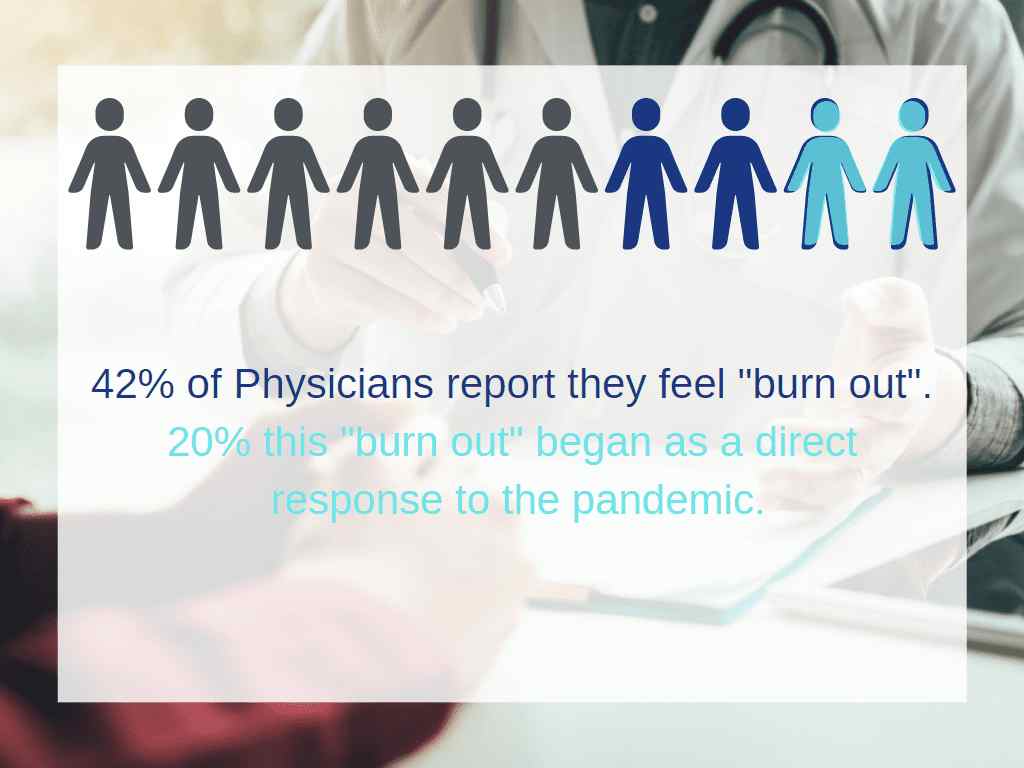
First and foremost, COVID-19 changed the way we “do medicine”. Full-stop, no way around it. It will continue to be a factor for the medical community for the time being. We will have to coexist with it, as we have. There are also so many new trends, five to specifically keep all of our eyes on:
Streamlining Efficiency. We’d like to have every one of our actions streamlined, like every human on the earth. In the medical community, this will be a big move toward taking on tools and solutions meant to shorten or quicken the cycle of discovering an illness and giving access to, or sharing the knowledge and clinical solutions that will solve the patient’s need. This may aid in the collaboration of medical teams to more seamlessly treat their patient with all of the pertinent treatment information on hand.
Clinician Fatigue. We’re all a little tired most of the time, but due to the shortages in the staffing of medical offices, and the sweeping shrinkage of staff in most medical positions, along with the pending retirement age of Baby Boomers taking the management teams and shaking them up a bit. It’s no small thing to say: Doctors are TIRED. The graphic below gives you a visual look at the burnout numbers: over 4 in 10 doctors are “burned out” and half of those say this all began with the stress and strain that came with the COVID-19 pandemic. As technology reacts, we’re expecting to see the load on clinicians balance itself out.
Digital Healthcare. Years ago, this concept was laughable, but in reality, we got to this point faster than we’d imagined. Aided by necessity in the face of a pandemic, the reality of having to balance out our analog life with our digital life may also see us doodling on notepads in digital waiting rooms. For better or worse, we will be transitioning to a world where telehealth will be adopted by many practitioners across the board, led by the demand for a more patient-centered business approach.
Data! This new very digital medical entryway will mean that you will have a palace of data built by patients, insurers, digital health devices, and medical vendors. (Can’t leave them out… they’re EVERYWHERE!) You will need to find a way to organize or structure this data in a form that is best suited to you and your patients, as well as treatments and medical necessities they may have. You will have to plan a way to curate and manage this data, using it as the asset that sets your practice, or medical system, above other practices and practitioners. Looking into the future you will need to have a way of integrating the information that your patients are getting from devices, like the Fitbit and Apple Watch, into your practice, helping you inform patient care and bridging the gap between monitoring your heart rate and sleep schedule, with understanding what those measurements mean and the value they carry in the medical treatment and health of your patients.
Health Equity. Just another item on the post-2020 to-do list: dealing with the many inequities in our health and justice systems. Sometimes holding a light up to the role institutions play in perceived “biases” can be difficult, because it means we have to reflect on our own prejudices. Holding our practices accountable for health equity, and ensuring that everyone has a fair and just opportunity to be healthy and access care when needed, despite what prejudice or barrier there may be to stop them is difficult. There are many factors at play in health inequality, the pandemic put a spotlight on them, and 2022 is looking like a pivotal time to aid in equalizing and administering healthcare across barriers.
To keep your practice running efficiently no matter what the trends look like come to Gables Medical Billing. We take care of your revenue cycle management, so your staff can assess and address your patients’ needs and run your practice efficiently.


